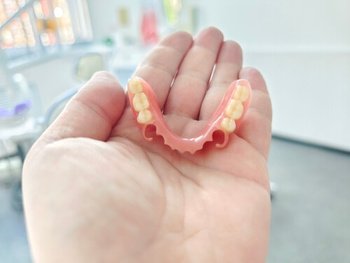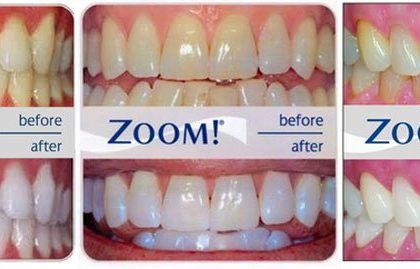A single tooth denture stays in securely through a combination of precise fitting and the natural suction created between the denture and the gum. This innovative dental solution offers comfort and functionality for those needing a single-tooth replacement. Understanding how a single tooth denture stays in can provide valuable insight for those considering this option. Let’s delve deeper into the fascinating mechanics of this modern dental technique.
How Does a Single Tooth Denture Stay In: Exploring the Magic of Dental Adhesion
Welcome, curious minds! Today, we embark on a fascinating journey to uncover the secrets behind how a single tooth denture manages to stay in place, seemingly defying gravity and logic. If you’ve ever marveled at the efficiency of modern dental technology, this article is for you. So, let’s dive in and explore the magic of dental adhesion!
The Basics of Single Tooth Dentures
Before we delve into the intricate details of how a single tooth denture stays in place, let’s first understand what exactly this marvel of dentistry is. A single tooth denture, also known as a dental crown, is a custom-designed prosthetic tooth that is placed over a damaged or missing tooth to restore its function and aesthetics.
Single tooth dentures are crafted to blend seamlessly with your natural teeth, providing a durable and long-lasting solution for individuals looking to regain their smile and chewing ability. But the question remains – how does this seemingly small and delicate piece manage to stay put amidst the daily grind of eating, talking, and smiling?
The Secret Ingredient: Dental Adhesives
The key to the stability of a single tooth denture lies in the remarkable world of dental adhesives. These specialized bonding agents play a crucial role in ensuring that your denture stays firmly in place, giving you the confidence to go about your day without worrying about any embarrassing slips or misalignments.
Understanding Dental Adhesion
So, how does dental adhesion work its magic? Well, the process is quite ingenious yet straightforward. Dental adhesives are designed to create a strong bond between the denture and the natural tooth, effectively holding them together as one cohesive unit. This bond is achieved through a combination of mechanical and chemical interactions that work in harmony to provide stability and durability.
When a single tooth denture is placed over a prepared natural tooth, the dental adhesive is carefully applied to the surfaces that will come into contact with each other. The adhesive then undergoes a curing process, during which it hardens and forms a secure attachment between the denture and the tooth.
The Role of Surface Preparation
Surface preparation plays a vital role in ensuring the success of dental adhesion. Before applying the adhesive, the natural tooth and the denture surface must be meticulously cleaned and roughened to create a rough texture that enhances the bonding strength. This process, known as etching, allows the adhesive to form micro-mechanical bonds with the surfaces, creating a tight grip that resists external forces.
Maintaining the Bond: Tips for Longevity
Now that we’ve uncovered the secrets behind how a single tooth denture stays in place, it’s essential to understand how to maintain this bond for long-lasting results. Proper care and maintenance of your denture are crucial to ensuring its stability and functionality over time.
Regular Oral Hygiene
One of the most important aspects of maintaining your single tooth denture is practicing good oral hygiene. Brushing and flossing regularly help prevent plaque buildup around the denture, which can weaken the adhesive bond over time. Make sure to use a soft-bristled toothbrush and non-abrasive toothpaste to avoid damaging the denture surface.
Avoiding Sticky and Hard Foods
While single tooth dentures are designed to withstand the pressures of everyday chewing, it’s best to avoid overly sticky or hard foods that can put excessive strain on the denture and the adhesive bond. Opt for softer food options and cut hard items into smaller, more manageable pieces to reduce the risk of dislodging the denture.
Regular Dental Check-ups
Regular visits to your dentist are essential for monitoring the condition of your single tooth denture and ensuring that the adhesive bond is intact. Your dentist will perform routine examinations and cleanings to detect any issues early on and provide necessary adjustments to maintain the stability of your denture.
Conclusion: The Magic of Dental Adhesion
As we conclude our exploration into the fascinating world of how a single tooth denture stays in place, we have unraveled the mysteries behind the remarkable bond created by dental adhesives. Through a combination of expert craftsmanship, cutting-edge technology, and proper maintenance, single tooth dentures can provide a seamless and reliable solution for individuals seeking to restore their smile and confidence.
So, the next time you flash that radiant smile or enjoy a hearty meal without a second thought, remember the magic of dental adhesion working behind the scenes to keep your single tooth denture securely in place. Here’s to the power of modern dentistry and the wonders it can achieve!
How To REPLACE A Missing Tooth (Best Tooth Replacement Options)
Frequently Asked Questions
How does a single tooth denture stay secure in the mouth?
A single tooth denture stays in place through the use of materials like dental adhesive or clasps that attach to adjacent teeth. The fit of the denture against the gums and surrounding teeth also contributes to its stability.
What is the role of dental adhesive in securing a single tooth denture?
Dental adhesive is a key element in keeping a single tooth denture in place. By applying a small amount of adhesive to the denture before placing it in the mouth, it creates a strong bond between the denture and the gums, ensuring a secure fit throughout the day.
Can a single tooth denture be anchored to neighboring teeth for stability?
Yes, a single tooth denture can be anchored to adjacent teeth using clasps or attachments. These connectors provide additional stability and prevent the denture from moving or shifting while eating or speaking.
Final Thoughts
A single tooth denture stays in place through a combination of suction, proper fit, and adhesives. The denture is custom-made to fit snugly over the natural tooth stump or implant. Adhesives can be used for additional support. Regular adjustments and maintenance by a dentist ensure the denture remains secure. Overall, how a single tooth denture stays in relies on a well-fitting design and proper care for stability and functionality.










